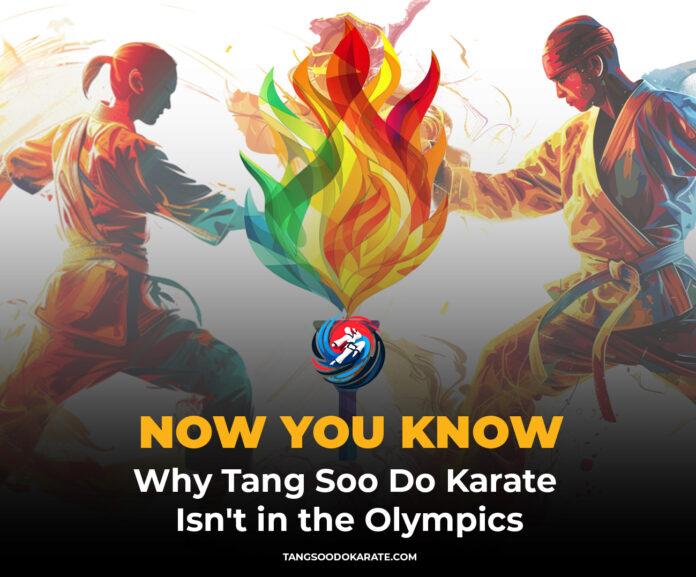Ever wondered why Tang Soo Do, a traditional Korean martial art, isn’t in the Olympics? Here are the surprising reasons! 👇
- Recognition and Standardization: The IOC requires sports to have a standardized set of rules and a unified international governing body. Tang Soo Do lacks this global oversight, making it ineligible for Olympic consideration.
- Sport vs. Traditional Martial Art: Tang Soo Do emphasizes traditional techniques, forms (hyung), and philosophies. Unlike Taekwondo and Judo, it hasn’t adapted to the competitive sports framework of the Olympics.
- Popularity and Global Reach: Olympic sports need a broad and diverse international following. While Tang Soo Do is practiced worldwide, it doesn’t match the global recognition and participation levels of Taekwondo, Judo, or Karate.
- Lobbying and Support: Strong lobbying is crucial for Olympic inclusion. Taekwondo benefited from significant support from the Korean government and the World Taekwondo Federation. Tang Soo Do hasn’t had the same coordinated efforts.
Despite its rich history and dedicated following, these factors keep Tang Soo Do out of the Olympic Games. 😲
Meanwhile, these martial arts are recognized and competed in at the Olympic level:
- Judo: A Japanese martial art focusing on throws and grappling techniques. Olympic sport since 1964.
- Taekwondo: Known for its dynamic kicking techniques. Part of the Olympics since 2000.
- Boxing: A combat sport with Olympic history dating back to 1904.
- Wrestling: Includes both Greco-Roman and Freestyle, part of the Olympics since 1896.
- Karate: Debuted at the 2020 Tokyo Olympics with Kumite (sparring) and Kata (forms).
#TangSooDo #MartialArts #OlympicSnub #Karate #MartialArtsCommunity #TraditionalMartialArts #TangSooDoJourney #OlympicGames #MartialArtsHistory #ShockingTruth #OlympicExclusion #Judo #Taekwondo #Boxing #Wrestling #Karate
© TANGSOODOKARATE.COM 2024. All rights reserved.






